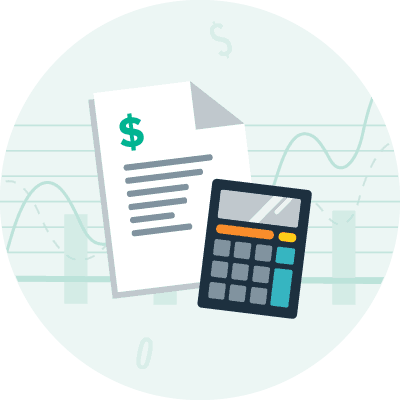What Are Soft Assets?
REtipster does not provide tax, investment, or financial advice. Always seek the help of a licensed financial professional before taking action.
What Are Soft Assets?
Soft assets are intangible resources with an abstract nature that generally contribute to the organization or investor’s value.
They are usually difficult to quantify and cannot be directly measured in terms of money, but they can still impact an organization’s bottom line.

The intangible nature of a non-physical asset means it cannot be touched, nor can it be easily traded on the open market. However, these holdings are unique to a company or business, and competitors cannot easily replicate them.
Another way to think of these assets is something conceptual that can be acquired or created by businesses.
As intangible products, they are considered indefinite (a brand name) or definite (a contract or legal agreement), which can give any business a competitive advantage[1].
Since companies create soft assets, they are not generally recognized in an organization’s balance sheet and have no recorded book value unless they were obtained through acquisition[2].
“Blue Sky” and Soft Assets
The term “blue sky” or “goodwill” means the additional premium paid to acquire a business. To be more specific, it is the difference between a business’s net asset value and its purchase price.
Suppose Investor A wants to acquire Company B. On paper, Company B’s fair market value is $100 million, but Investor A is willing to pay $125 million for Company B. In this example, the extra $25 million is the blue sky valuation.
Blue sky valuation accounts for the intangibles when acquiring a business and considering asset finance. These include most (if not all) of its soft assets, such as the potential of the business to make long-term money, and any other asset not expressed as such in the company’s balance sheet.
Until recently, blue sky valuation was a matter of trust and instinct, since soft asset finance can be challenging to define (let alone calculate). However, the Financial Accounting Standards Board (FASB) changed how intangible assets can be measured with the release of Statement of Financial Accounting Standards 141 and 142, which broke down intangible assets into five categories called MACCT[3]:
- Marketing. These include brand names, trademarks, domain names, and similar items.
- Art. Any form of art, such as literature, music, photographs, paintings, sculptures, and related items.
- Customers. These stand for customer-related intangibles, such as buyers lists and subscribers.
- Contracts. Soft assets based on contracts, such as licenses and leases.
- Technology. These include hardware and software, either patented or not, that the company uses to carry out its operations.
These assets usually have no fixed value. To find out the intrinsic worth of each, one can look at the cost to produce, how much it would cost to replicate, and how much a buyer would pay to acquire such an asset as a singular entity with no business association[4].
If these assets can be sold, leased, or licensed, they can usually be capitalized when the time comes to sell the business. Adding all these assets together can increase the blue sky valuation of a company.
Examples of Soft Assets
There are plenty of examples of soft assets in the business world.
Some of the most common examples include the following.
Brand Equity and Identity
Various factors influence a company’s success, but brand equity is a common denominator.
Brand equity refers to the uniqueness and recognizability of a brand in its space or industry. The higher a company’s brand equity, the more customers are willing to pay for its products since its reputation inspires confidence in potential buyers[5].

Nike’s “swoosh” symbol is one of the most recognizable brand logos in the world.
On the other hand, brand identity refers to the visible elements of a company’s brand. The identity typically consists of a logo, unique design, and slogan that help consumers immediately recognize the brand.
A strong brand identity can help attract new business, allow potential customers to remember a company’s products and services, create an emotional connection with customers, and encourage loyalty[6].
Company Culture
A company’s culture is its collection of values, principles, and practices that guide how employees deal with clients/customers and one another. A strong company culture can improve employee satisfaction and retention, attract top talent, foster a positive reputation, and help a business reach its full potential[7].
All these factors can lead to increased productivity and profitability.
Human Capital
Human capital is the economic value of an employee’s experience and skills. It includes assets like education, training, intelligence, business instincts, health, and even employers’ values like loyalty, punctuality, teamwork and support, and trustworthiness. These factors allow employees to add value to a company and make it more productive[8].
Organizations can invest in human capital by offering benefits other than monetary compensation. These include (but are not limited to) health insurance, retirement plans, and training and development. Some companies may also offer perks that foster interpersonal relationships and improve mental health.
Intellectual Property
IP is an invention or creation of an individual or an entity. Intellectual property can be patented, thereby providing protection and enforcement by domestic and (sometimes) international law[9]. Under these laws, the patent holder has exclusive rights for its usage and distribution.
Software exclusively used by the company, for example, even if not sold on the market, is an example of an IP.
How Are Soft Asset Purchases Financed?
While most businesses acquire assets like property or equipment through debt or equity, the unique nature of soft assets can make them more challenging to obtain in the conventional sense.
Brand equity and identity, company culture, human capital, and intellectual property are not tangible assets that may be pledged as collateral for a loan. They are harder to value compared to tangible assets.
However, there are a few ways to finance the purchase of soft assets.
One way is through an earn-out agreement. This is typically employed when two parties want to complete a deal but must mutually agree on the asset’s value. In an earn-out agreement, the buyer agrees to pay the seller based on meeting certain milestones, such as increased revenues or profits[10].

The Walt Disney Company is one of the world’s biggest licensors.
Licensing arrangements are another way to finance soft assets. These are legal written contracts that depend on the IP that needs protecting. In this agreement, a licensor consents to another party, the licensee, using the IP under certain conditions.
Furthermore, the agreement specifies how the licensee may use the IP and the terms of compensation[11].
Pros and Cons of Owning Soft Assets
There are some pros and cons to owning or investing in soft assets. Understanding them can make the difference between a wise investment and a poor one.
Advantages
- Source of competitive advantage – Unlike physical machinery or computer hardware, soft assets are distinctive and difficult to imitate, providing a business with a competitive edge.
- Increased value – While it can be challenging to place a monetary value on soft assets, they can still add value to a company. For instance, a strong brand can make it easier to charge premium prices, and a skilled workforce can lead to increased productivity.
- Improved financial performance – Investing in human capital and developing a strong company culture can improve a business’s financial performance by reducing turnover, attracting top talent, and boosting employee productivity.
- Creates a barrier to entry for competitors – When a company thrives because of soft assets such as IP or human capital, it puts other companies without those provisions at a disadvantage.
- Improved efficiency – Properly managed, soft assets can lead to increased efficiency and productivity gains since they help businesses focus on their core competencies.
Disadvantages
- Difficult to value – Because soft assets are intangible, they can be difficult to evaluate, which can make it challenging to obtain financing for their purchase or convince shareholders to invest in them.
- High risk – Soft assets are also more susceptible to obsolescence and other threats. For example, new technology or changes in consumer preferences can make a company’s intangible assets lose considerable value overnight[12].
- Requires ongoing investment – Soft assets must be continually nurtured and developed through continued investment, which has a considerable real-world cost.
- Time-consuming and expensive to develop – Creating soft assets from scratch can be time-consuming and costly. For example, building a solid brand or developing a skilled workforce can take years.
- Could lose value if not appropriately managed – Unlike hard assets, which can appreciate over time, soft assets tend to depreciate. This is because they constantly change, and their value often depends on factors outside the company’s control.
Takeaways
- Soft assets are intangible objects with considerable, abstract value.
- Unless acquired, they are typically not recorded on a company’s balance sheet and have no reported book value.
- Examples of soft assets include brand equity and identity, company culture, human capital, and intellectual property.
- While their worth is often open to interpretation, they help an organization create value, including actual, tangible assets.
- As such, most organizations place equal importance on acquiring, developing, and cultivating their soft assets just as much as they do on hard assets.
Sources
- Kenton, W. (2022, March 20.) What Are Intangible Assets? Examples and How to Value. Investopedia. Retrieved from https://www.investopedia.com/terms/i/intangibleasset.asp
- Soft asset definition. (2022, July 7.) Accounting Tools. Retrieved from https://www.accountingtools.com/articles/soft-asset
- Schostag, R. (2004.) Identifying Intangible Assets: Peeling Back the Onion. CPA Leadership Institute. Retrieved from https://www.cpaleadership.com/public/262.cfm
- Schostag, R. (n.d.) How to Find Your Company’s “Blue Sky” Value. Upsize. Retrieved from https://upsizemag.com/business-builders/blue-sky-value-of-a-business
- Hayes, A. (2021, February 22.) Brand Equity: Definition, Meaning, Effect on Profit Margin, and Examples. Investopedia. Retrieved from https://www.investopedia.com/terms/b/brandequity.asp
- Tarver, E. (2022, April 11.) Brand Identity: What It Is and How To Build One. Investopedia. Retrieved from https://www.investopedia.com/terms/b/brand-identity.asp
- Kaupp, D. (2018.) Corporate culture an underestimated intangible asset for the information society. European Institute for Knowledge & Value Management (EIKV). EconStor. Retrieved from https://www.econstor.eu/bitstream/10419/175829/1/1016028601.pdf
- Becker, G. (n.d.) The Library of Economics and Liberty. Econlib. Retrieved from https://www.econlib.org/library/Enc/HumanCapital.html
- Intellectual Property Enforcement. (n.d.) U.S. Department of State. Retrieved from https://www.state.gov/intellectual-property-enforcement/
- Earn-Outs and Contingent Payments. (n.d.) The Hartford. Retrieved from https://www.thehartford.com/business-insurance/strategy/sell-a-business/earn-out-contingency-payment
- Licensing Agreements: The Basics. (n.d.) Inc.com. Retrieved from https://www.inc.com/encyclopedia/licensing-agreements.html
- Reputational Damage: 3 Worst Cases & 11 Next Steps for Protecting Your Brand & Company. (2019, March 20.) JD Supra, LLC. Retrieved from https://www.jdsupra.com/legalnews/reputational-damage-3-worst-cases-11-90321/








